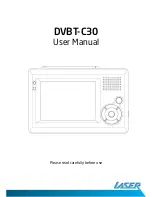
15
OPM-124/B
STARTING PROCEDURE
CONTROL LAYOUT
STOP/RESET - This button places the module into its Stop/
Reset mode. This will clear any alarm conditions for which
the triggering criteria have been removed. The fuel supply
de-energizes and the engine comes to a standstill. Should a
remote start signal be present while operating in this mode,
a remote start WILL NOT occur.
MANUAL MODE - This button places the module into its
Manual Mode. Once in Manual Mode, the model responds
to the Start button to start the generator and run it off load.
START - Pressing this button from STOP/RESET will start the
engine and run the load.
AUTO MODE - This button places the module into its Auto
Mode. This mode allows the module to control the function
of the generator automatically.
ALARM/LAMP TEST - This button silences the audible alarm
in the controller, deactivates the Audible Alarm output (if
configured) and illuminates all of the LEDs on the module’s
face as a lamp test function.
MENU NAVIGATION - Used for navigating the
instrumentation, event log, and configuration screens.
A small rocker switch is located on the
underside of the engine control cabinet.
On gaseous models, the engine timing is
controlled by the ECU on the engine and you
need to tell it what fuel you want to operate
on; LP or NG.
On diesel models, this switch has been
disconnected and will do nothing.
PROTECTIONS
When an alarm is present, the common alarm LED if
configures will illuminate. The LCD display will show an icon
to indicate the failure.
WARNINGS
Warnings are non-critical alarm conditions and do not
affect the operation of the generator system, they serve to
draw the operator’s attention to an undesirable condition.
Warning alarms are self-resetting when the fault condition
is removed. The icon will appear steady in the display.
SHUTDOWN
Shutdowns are critical alarm conditions that stop the
engine and draw the operator’s attention to an undesirable
condition. Shutdown alarms are latching. The fault must be
removed and the STOP/RESET button pressed to reset the
module. The icon will be flashing in the display.
INITIAL START UP
WARNING: EQUIPMENT DAMAGE
Before attempting to start this unit, complete your
pre-start checklist and ensure the generator mainline
circuit breaker is in the proper position prior to starting.
Starting this unit without it properly connected can
cause serious personal injury or equipment damage.
DO NOT jump start these engine-generator sets. Starting
these units on a low battery or jump starting them will
cause damage to the engine control module.
Use the following check list to verify correct installation
before starting the engine.
□
Engine oil. Fill as required with proper grade/qty.
□
Engine coolant. Fill as required with proper mixture.
□
Unit mounting base properly bolted down.
□
Clearance for service and maintenance on all sides.
□
Proper fuel line material and size.
□
All fuel line connections tight.
□
Battery connections clean and tight
□
Battery fully charged.
□
All AC and DC wiring installed and properly
protected.
After completing the previous checklist, the engine-
generator set is ready for initial start-up.
MANUAL MODE
1. Press and release the MANUAL MODE button. The small
LED light next to it should come on.
Note:
There is no start delay in this mode of operation.
2. Press and release the green START ENGINE button. The
DSE 7310 MKII will send two signals to the engine. The
first signal wire #21 will engage the fuel solenoid, the
second wire, #22, will engage the starter on the engine.
At this point the DSE7310 will start the cranking cycle (10
seconds on and 10 seconds off).
If the engine fails to start during this cranking period, the
starter motor is disengaged and goes into a rest mode
after which a second attempt is made to start the engine.
Should this sequence continue through 3 cranking cycles
the start sequence will be stopped and the display will
show ‘FAILED TO START”.
3. During manual operation, the load will not normally be
applied to the generator. But caution must be used, if the
line power should fail or be turned off the transfer switch
during manual operation the load may be applied to the
generator.
With the engine running smoothly check the no load
voltage and frequency on the digital display. The voltage
should be 208/240/480 AC depending on which model
you have and a frequency of 59.5 to 60.5 hertz (Hz).
If you have the proper voltage at the generator the next










































